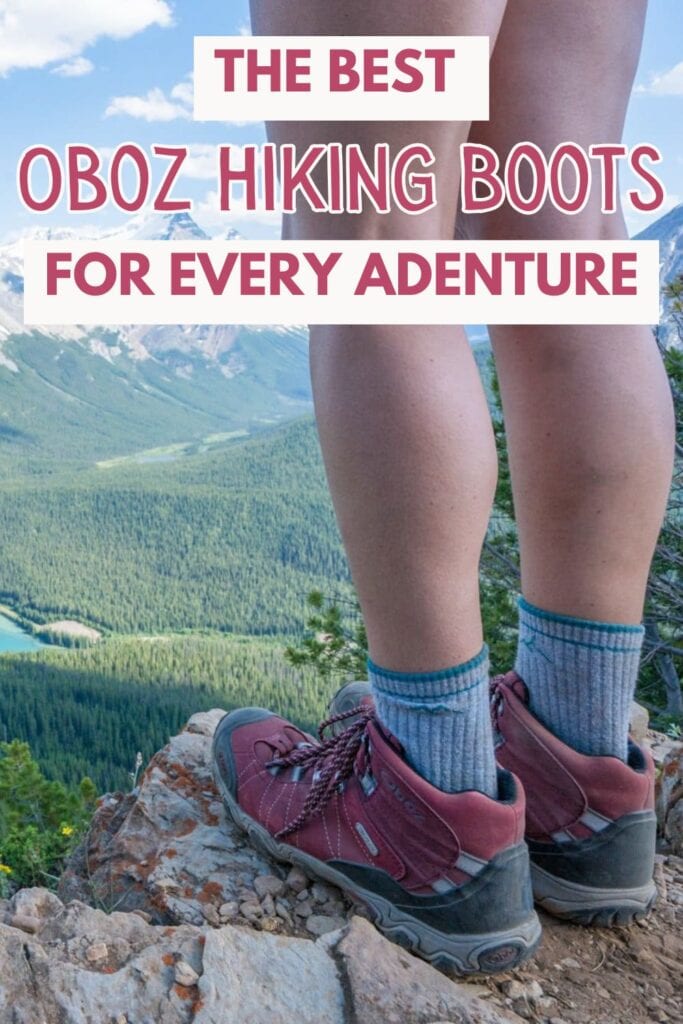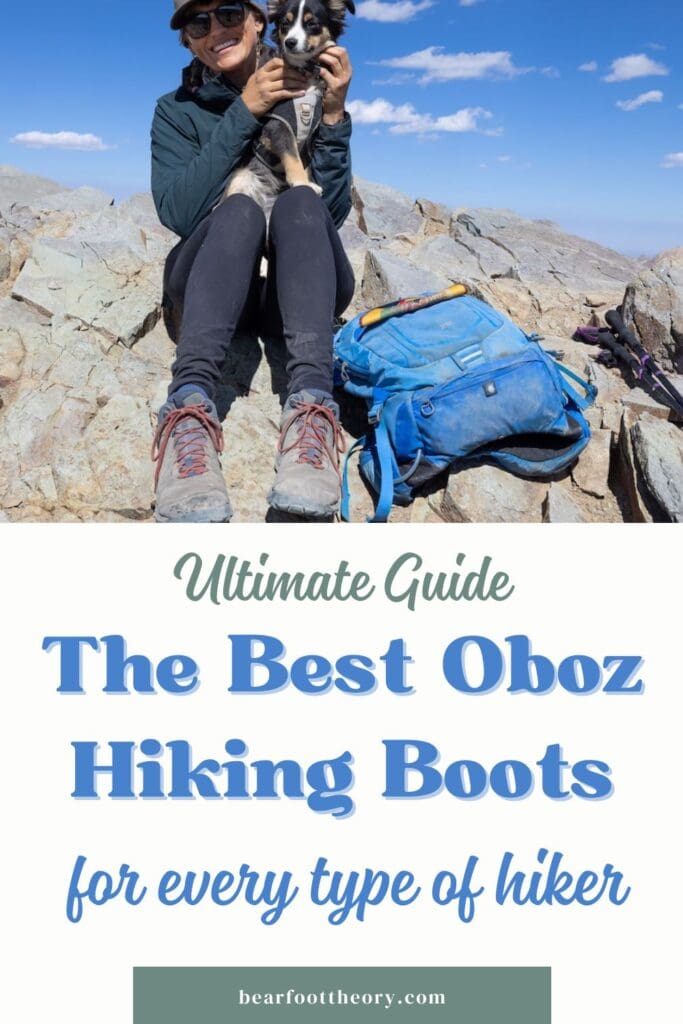My Favorite Oboz Hiking Boots – Reviewed
Trying to decide which pair of Oboz hiking boots to get? In this post I round up my favorites that I’ve worn over the years.
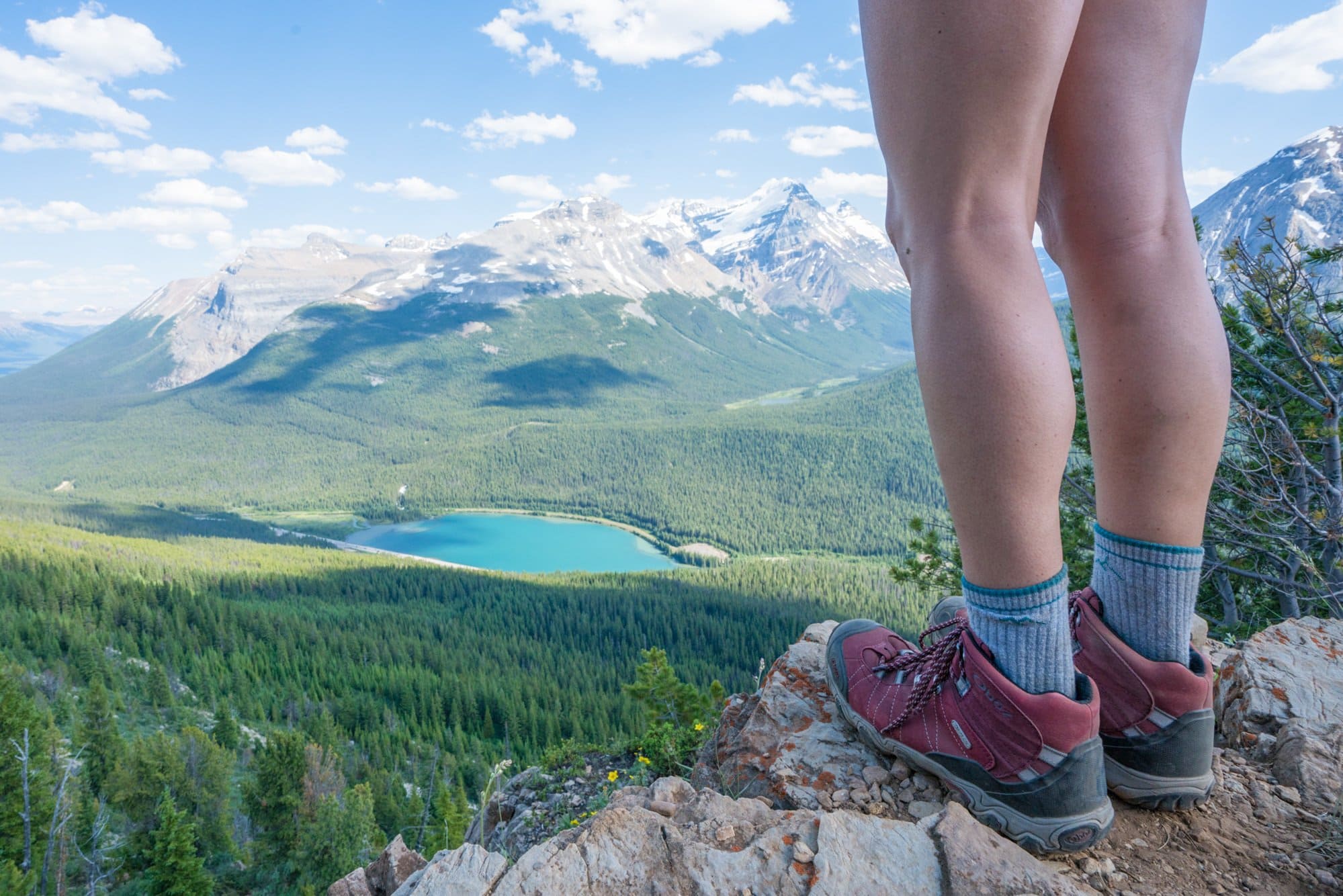
I’ve been wearing Oboz hiking boots for the last 8 years, and I’ve tried almost every shoe in their lineup. Whether I’m tackling a rugged backcountry trail, on a quick hike with my dogs, or looking for a stylish option to transition seamlessly from trail to town, there is a pair of Oboz that fits the bill.
If you’re trying to figure out which pair of Oboz hiking shoes is for you, in this post, I’ll share my favorite Oboz picks, from the sturdy Bridger Bdry for serious backpacking to the versatile Katabatic for everyday wear and everything in between.
Many of these come in waterproof and non-waterproof versions. If you need help deciding on that, check out my post on waterproof vs. non-waterproof hiking boots.
This post may contain affiliate links.
1. Oboz Bridger Mid Waterproof Hiking Boots
Pros and Cons
My Review
I’ve struggled with foot pain in the past when it comes to hiking boots, but Oboz women’s hiking boots have been a game-changer for me. They provide the support and comfort I need to enjoy long days on the trail without any discomfort.
For trips that require something super sturdy, especially when I’m backpacking, I rely on the Oboz Bridger Mid Waterproof Hiking Boots. These boots have been my go-to on countless big adventures, including a challenging 10-day backpacking trip in Alaska. The rugged terrain and constant rain were no match for these boots—they kept my feet completely dry, warm, and blister-free, even through bushwhacking and tough conditions.
I also wore them on a 5-day backpacking trip through Sequoia National Park, where I tackled the steep, rocky trail with a 40-pound pack. The Bridger Mids offer a solid, durable sole, a supportive insole, and fantastic ankle support, which helped immensely with balancing a heavy load. While moderately stiff, they still provide comfort over long distances, and there is no break in period required.
My feet are relatively flat and narrow, and these boots fit me perfectly. They sit about an inch above my ankle bone, and I love how the heel cup keeps my foot in place, eliminating any heel movement on ascents and descents.
If you have wider feet, the Bridger Mid also comes in a wide version. I recommend sizing up a half size to give your toes more room in the toe box, which adds extra comfort on long hikes.
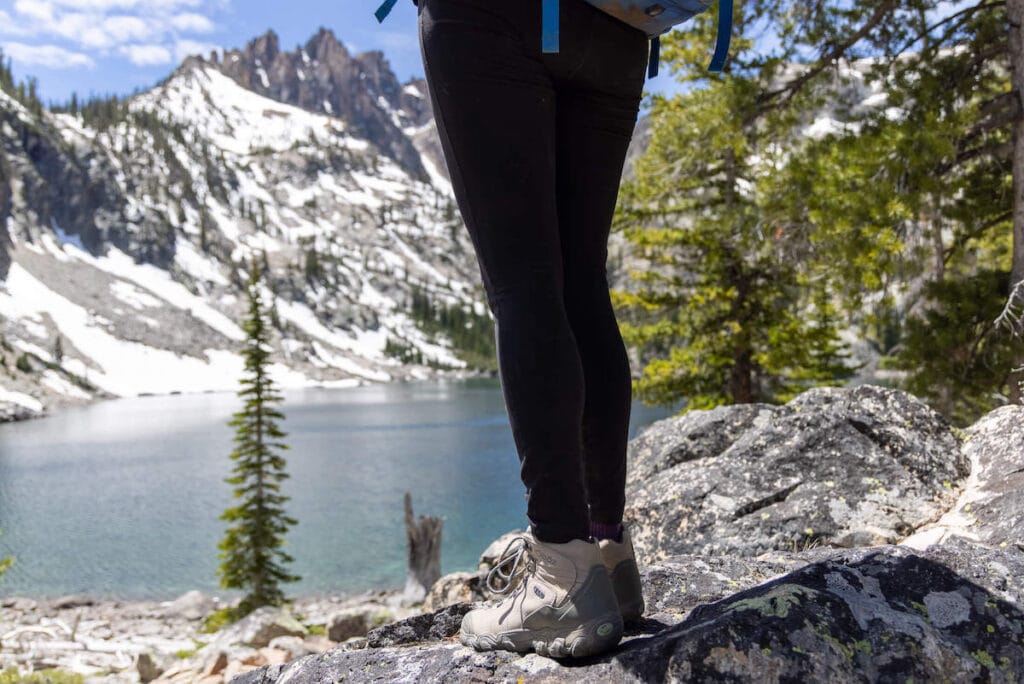

Tip: Clean your hiking boots!
In order to maintain the waterproofness of any hiking boot, it’s important to clean them periodically. Learn how to properly clean your hiking footwear here.
Save this post!
Enter your email & I'll send this post to your inbox! You'll also receive my weekly newsletter full of helpful advice for planning your adventures.
2. Oboz Sawtooth X Low Hiking Shoes
Pros and Cons
My Review
The Oboz Sawtooth II was my go-to low-top hiking shoe for years, and I was excited to see the updated Sawtooth X model, released in 2022, which comes with even better traction and durability—especially useful for those wet, rainy days on the trail.
For bigger day hikes with steep, uneven terrain, the Sawtooth X Low is a great choice. These shoes are built tough, offering a sturdy, waterproof design with a super grippy sole that ensures great traction, whether on rock, mud, or loose dirt. They also feature an asymmetric collar around the ankle, designed to work with natural ankle bone variations, which I’ve found helpful for preventing chafing and rubbing on long hikes.
I’ve put these shoes to the test on steep Colorado 14ers, on my Trans-Catalina Trail backpacking trip, and clocked countless miles on easier day hikes. They’re even comfortable enough to wear around camp on cooler nights, making them a versatile option in any hiking wardrobe.
However, I do experience a bit of heel slippage with these, so if you have narrow heels or ankles, the Firebrand II may be a better fit (which I’ll discuss in more detail next).
Additionally, the Sawtooth X is available in a mid-ankle version if you prefer more ankle support, with both waterproof and non-waterproof options. I have the waterproof model, ideal for the mountain hikes I tend to do.
For an in-depth breakdown, check out my full Oboz Sawtooth X review.

3. Oboz Firebrand II
Pros and Cons
My Review
If you have narrow heels like me, you might find that the Oboz Sawtooth X allows for a bit of heel movement. That’s why I actually prefer the Oboz Firebrand II, which has the same supportive midsole and grippy outsole as the Sawtooth X.
This means you get identical cushion, stability, and traction, but with a couple of key upgrades for narrower feet. The Firebrand II has a slightly lower overall volume, which helps hug a narrower foot securely, and it features a larger heel drop, offering a bit more lift.
I wore the Firebrand II while pregnant, tackling rocky and steep trails in the Italian Dolomites. Even on challenging terrain, the locked-in feel around my heel gave me confidence, and the slightly stiffer construction provided solid support on uneven surfaces.
Oboz includes their BDry waterproofing on the Firebrand II, so you don’t have to worry about water sneaking into your shoes.

4. Oboz Katabatic Low Hiking Shoes
Pros and Cons
My Review
The Oboz Katabatic Low Hiking Shoes have quickly become my top choice for lightweight, everyday adventures—whether I’m heading out for a day hike, setting up camp, taking a stroll around the neighborhood, or just running errands. They’re comfortable from day one and have such a low-profile design that they transition effortlessly from the trail to casual outings.
When I’m living and traveling in my van, I need to be intentional about the gear I bring along, especially footwear. I rely on versatile, comfortable shoes that can handle everything from rugged trails to campsite hangs and trips into town. The Oboz Katabatic Low ticks all those boxes, and they’ve been my everyday go-to on the road for the past two summers.
The Katabatic is one of the lightest shoes Oboz makes, and it’s a lot more flexible than their other hiking boots.
On the trail, the Katabatic’s durable sole provides solid traction on rocky terrain, keeping me stable on uneven ground. While it doesn’t have quite as much cushioning as the Sawtooth X, it still provides enough support to prevent foot fatigue on longer hikes. The fit is also ideal for me—my heel stays snug and secure, while the toe box is wide enough to allow my toes to spread naturally without feeling cramped.
I opted for the non-waterproof version, which has been great for warm, dry hikes in the desert. For those hiking in wetter climates, the Katabatic is also available in a waterproof model.
If you’re looking for a comfortable, adaptable shoe for outdoor and everyday use, the Katabatic Low is a solid choice. For a deeper dive, check out my full review of the Oboz Katabatic.
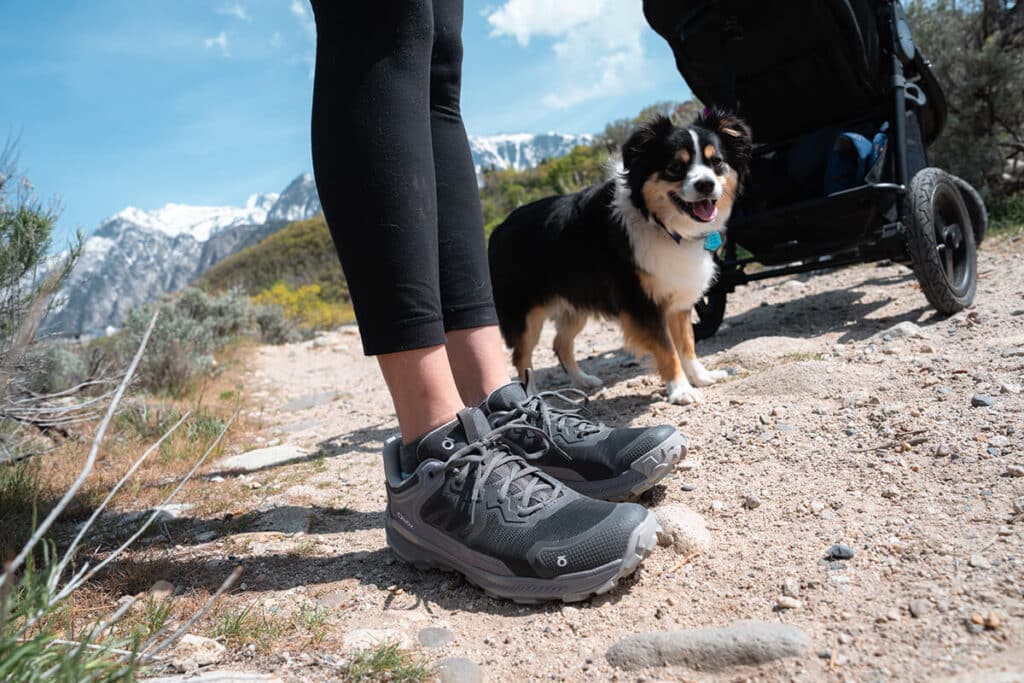
5. Oboz Bridger Insulated 9″
Pros and Cons
My Review
The Oboz Bridger Insulated boots have been my go-to for winter hiking and snowshoeing, and they’ve truly proven their worth in cold, snowy conditions. My feet get very cold (my toes even go numb sometimes), and right off the bat, I was impressed with how warm they kept my feet, thanks to the 400g 3M Thinsulate insulation.
For comfort, the O FIT Thermal insole is a great addition. It’s lined with wool and Mylar, adding another layer of insulation so my feet don’t feel cold from the bottom.
With the B-DRY waterproof membrane, my feet have stayed dry through slushy trails and snowbanks. Plus, the 9″ cuff on the women’s (10″ on men’s) is tall enough that I’m able to trudge through some powder without the snow entering the top of the boot.
Traction is another area where the Bridger Insulated excels. The outsole has deep lugs and a winter-ready rubber compound that grips well on snow and mixed terrain. I feel steady on my feet even on icy patches, although on pure ice, they can slip a bit, so I recommend pairing with microspikes if the trail is really slick.
They’re heavier than some other winter boots, though, which I definitely notice on longer hikes. At over 3 pounds a pair, the weight can start to feel like a workout, but for the warmth and protection they provide, it’s a trade-off I’m okay with.
If you want something lighter, these do come in a 7″ version (women’s) or 8″ version (men’s), but these only have 200 g of insulation compared to 400 g in the taller version.
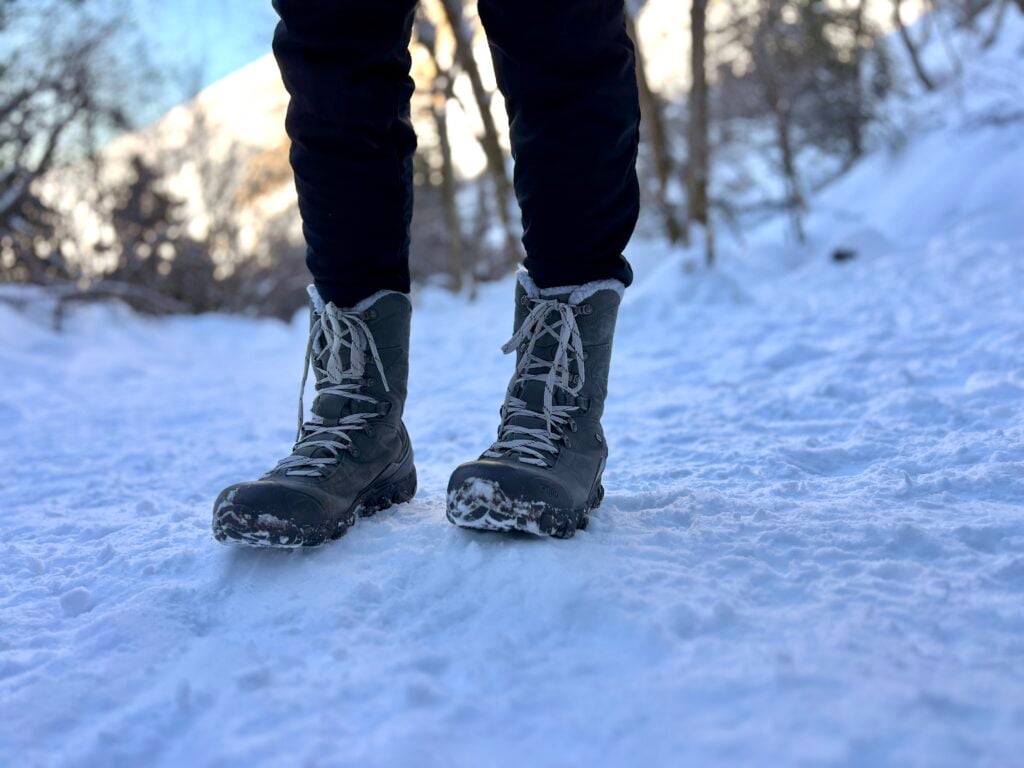
More Hiking Gear Posts
Save this post to Pinterest
Have you tried Oboz Footwear? What are your favorite of their hiking shoes?

